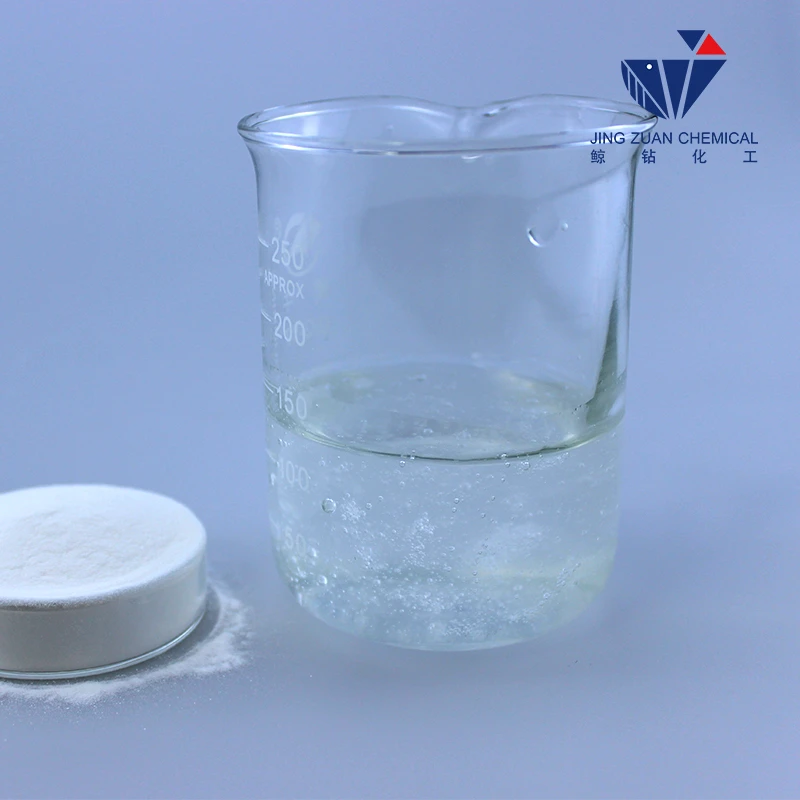
Nov . 08, 2024 12:46 Back to list
Natural Hydroxyethylcellulose Benefits and Applications in Various Industries and Products
The Wonders of Hydroxyethylcellulose A Natural Choice for Modern Applications
In the world of modern science and technology, the quest for sustainable and effective materials has led to the emergence of various innovative substances. Among them, hydroxyethylcellulose (HEC) stands out for its versatility and natural origins. This remarkable compound, derived from cellulose, is increasingly being utilized in a wide array of applications, ranging from cosmetics to pharmaceuticals, thanks to its unique properties and advantages.
Understanding Hydroxyethylcellulose
Hydroxyethylcellulose is a non-ionic water-soluble polymer formed by the etherification of cellulose with ethylene oxide. The natural source of cellulose, primarily derived from wood pulp or cotton, makes HEC a biodegradable option that aligns well with the growing demand for environmentally friendly alternatives. This substance is not only safe for human use but also compatible with a variety of formulations, providing an excellent solution for product developers seeking sustainable ingredients.
Key Properties of Hydroxyethylcellulose
One of the standout characteristics of HEC is its thickening ability. When dissolved in water, hydroxyethylcellulose forms a viscous solution, making it an effective thickener in various formulations. This property is particularly beneficial in the cosmetic and personal care industry, where HEC is used in lotions, creams, and gels to achieve the desired texture and consistency without compromising the product's performance.
Moreover, HEC exhibits excellent binding and film-forming properties, which are crucial in enhancing the stability and longevity of products. Its ability to create a smooth film on the skin makes it an ideal ingredient in lotions and sunscreens, providing a barrier that locks in moisture and protects the skin from environmental stressors.
Applications Across Industries
hydroxyethylcellulose natural

The uses of hydroxyethylcellulose span multiple industries, highlighting its versatility as an ingredient. In the cosmetics sector, it serves as a thickener, stabilizer, and emulsifier in various formulations, from shampoos to face masks. Its gentle nature makes it suitable for sensitive skin, ensuring that consumers receive high-quality products without adverse reactions.
In the pharmaceutical field, HEC is employed as a binder in tablet manufacturing, enhancing the cohesion of ingredients and ensuring consistent dosages. It is also used in ophthalmic solutions and gels, benefiting from its viscosity to provide longer retention of the active ingredients on the ocular surface.
In addition to personal care and pharmaceuticals, hydroxyethylcellulose finds applications in the construction industry. It is utilized as a thickening agent in mortars, adhesives, and coatings, improving workability and extending open times, allowing for better adhesion and application.
Eco-Friendly and Sustainable
As the global community moves towards sustainability, the appeal of hydroxyethylcellulose grows stronger. Being a natural derivative of cellulose, HEC is not only biodegradable but also renewable, making it an environmentally responsible choice. Its minimal impact on the environment aligns with the values of consumers who are increasingly conscious of their purchasing decisions.
Furthermore, HEC's production process is relatively gentle compared to synthetic alternatives. Manufacturers can utilize eco-friendly practices to produce HEC, reducing energy consumption and pollution levels. This positions HEC as a frontrunner in the push for greener materials in various industries.
Conclusion
Hydroxyethylcellulose represents the intersection of nature and modern technology. Its diverse applications, eco-friendly profile, and outstanding properties make it an invaluable ingredient in personal care, pharmaceuticals, and construction. As consumers and manufacturers alike recognize the importance of sustainable practices, hydroxyethylcellulose will undoubtedly continue to gain traction as a preferred choice in the development of safe, effective, and environmentally responsible products. As we move forward, embracing such natural innovations will be key in shaping a sustainable future.
-
Versatile Hpmc Uses in Different Industries
NewsJun.19,2025
-
Redispersible Powder's Role in Enhancing Durability of Construction Products
NewsJun.19,2025
-
Hydroxyethyl Cellulose Applications Driving Green Industrial Processes
NewsJun.19,2025
-
Exploring Different Redispersible Polymer Powder
NewsJun.19,2025
-
Choosing the Right Mortar Bonding Agent
NewsJun.19,2025
-
Applications and Significance of China Hpmc in Modern Industries
NewsJun.19,2025







